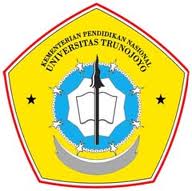Anda belum Log-in!
Silahkan Log in
Selamat Datang di Portal Digital Content Publisher
Selasa , 08 July 2025
Perpustakaan sebagai jantung pendidikan tinggi di Indonesia, harus mampu memberi kontribusi yang berarti bagi pelaksanaan proses belajar mengajar di perguruan tinggi.
di-posting oleh 140421100034 pada 2018-07-27 12:26:42 • 301 klik
Analisis Pengendalian Kualitas Dengan Menggunakan Statistical Quality Control Pada PT Sumber Mas Indah Plywood
Analysis of Quality Control Using Statistical Quality Control At PT Sumber Mas Indah Plywood
disusun oleh BAYU FITRIANSAH
| Subyek: | Pengendalian Kualitas Plywood |
| Kata Kunci: | Produk Cacat Pengendalian Kualitas Statistik Diagram Pohon |
[ Anotasi Abstrak ]
PT Sumber Mas Indah Plywood merupakan perusahaan yang bergerak dibidang produksi kayu lapis. Proses produksi pada perusahaan berjalan dengan baik, hal ini ditandai permintaan yang besar dari pelanggan dan faktor-faktor lain yang menyebabkan proses produksi bisa berjalan dengan kontinyu. Meskipun demikian, seringkali ditemukan produk yang mengalami kerusakan atau cacat. Perushaan mempunyai target tingkat cacat yang terjadi tidak boleh lebih dari 0,5% per hari. Maka dari itu diperlukan pengendalian kualitas untuk meminimasi cacat produk. Pengendalian kualitas statistik adalah alat atau metode yang bisa digunakan untuk menagatasi permasalahan tersebut. Dalam pengendalian kualitas satistik terdapat tujuh alat yaitu flowchart, check sheet, histogram, gtrafik proporsi, diagram pareto, scatter plot, dan fishbone. Setelah dikethaui faktor-faktor penyebab kecacatan yang sering terjadi, selanjutnya adalah dicari solusi menggunakan diagaram pohon. Setelah dilakukan observasi, wawancara dan pengolahan data, terdapat 6 jenis cacat yang dominan dan harus diselsaikan. Kemudian melalui fishbone diketahui terdapat 6 faktor yang mempengaruhi terjadinya cacat yaitu manusia, material, pengukuran, metode, lingkungan, dan mesin. Dari 6 jenis cacat yang dominan, cacat yang paling dominan adalah cacat sander, solusi untuk agar tidak terjadi cacat sander adalag dengan menambah operator, dan menggunakan penutup telinga.
Deskripsi Lain
PT Sumber Mas Indah Plywood is a company engaged in the production of plywood. The production process in the company goes well, this is marked by the huge demand from customers and other factors that cause the production process can run continuously. However, it is often found that the product is defective or defective. The company has a defect rate target that should occur no more than 0.5% per day. Therefore quality control is required to minimize product defects. Statistical quality control is a tool or method that can be used to address the problem. In the quality control of satistik there are seven tools that is flowchart, check sheet, histogram, gtrafik proportion, pareto diagram, scatter plot, and fishbone. After dikethaui factors that cause disability that often occurs, then is sought solution using diagaram tree. After observation, interview and data processing, there are 6 types of defects that are dominant and must be resolved. Then through the fishbone known there are 6 factors that affect the occurrence of defects are human, material, measurement, method, environment, and machine. Of the six types of dominant defects, the most dominant defect is a sander defect, a solution to avoid sander defect by adding the operator, and using the earplugs.
| Kontributor | : Trisita Novianti, S.TP.,M.T;Ahmad Mughni, S.T.,M.Eng.Mgt |
| Tanggal tercipta | : 2018-07-26 |
| Jenis(Tipe) | : Text |
| Bentuk(Format) | |
| Bahasa | : Indonesia |
| Pengenal(Identifier) | : TRUNOJOYO-Tugas Akhir-13574 |
| No Koleksi | : 140421100034 |
Ketentuan (Rights) :
2018
 Download File Penyerta (khusus anggota terdaftar)
Download File Penyerta (khusus anggota terdaftar) 1. TRUNOJOYO-Tugas Akhir-13574-140421100034_COVER.pdf - 493 KB
1. TRUNOJOYO-Tugas Akhir-13574-140421100034_COVER.pdf - 493 KB 2. TRUNOJOYO-Tugas Akhir-13574-140421100034_ABSTRACT.pdf - 145 KB
2. TRUNOJOYO-Tugas Akhir-13574-140421100034_ABSTRACT.pdf - 145 KB 3. TRUNOJOYO-Tugas Akhir-13574-140421100034_CHAPTER1.pdf - 277 KB
3. TRUNOJOYO-Tugas Akhir-13574-140421100034_CHAPTER1.pdf - 277 KB 4. TRUNOJOYO-Tugas Akhir-13574-14042110034_CHAPTER2.pdf - 821 KB
4. TRUNOJOYO-Tugas Akhir-13574-14042110034_CHAPTER2.pdf - 821 KB 5. TRUNOJOYO-Tugas Akhir-13574-140421100034_CHAPTER3.pdf - 503 KB
5. TRUNOJOYO-Tugas Akhir-13574-140421100034_CHAPTER3.pdf - 503 KB 6. TRUNOJOYO-Tugas Akhir-13574-140421100034_CHAPTER4.pdf - 1296 KB
6. TRUNOJOYO-Tugas Akhir-13574-140421100034_CHAPTER4.pdf - 1296 KB 7. TRUNOJOYO-Tugas Akhir-13574-140421100034_CONCLUSION.pdf - 144 KB
7. TRUNOJOYO-Tugas Akhir-13574-140421100034_CONCLUSION.pdf - 144 KB 8. TRUNOJOYO-Tugas Akhir-13574-140421100034_REFFERENCES.pdf - 11 KB
8. TRUNOJOYO-Tugas Akhir-13574-140421100034_REFFERENCES.pdf - 11 KB 9. TRUNOJOYO-Tugas Akhir-13574-140421100034_APPENDICES.pdf - 67 KB
9. TRUNOJOYO-Tugas Akhir-13574-140421100034_APPENDICES.pdf - 67 KB Dokumen sejenis...
Dokumen sejenis...Tidak ada !
 Dokumen yang bertautan...
Dokumen yang bertautan... Kembali ke Daftar
Kembali ke Daftar 